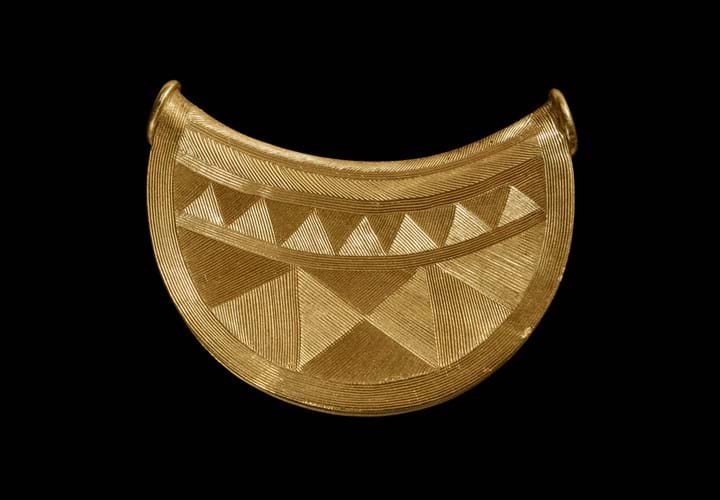It is only the second of its type to be found in the UK and the museum paid £250,000 with the help of funding from Art Fund and the American Friends of the British Museum.
The museum plans to lend it to Shrewsbury Museum & Art Gallery, near the find site, for the first public display as part of British Museum’s National Programmes.
Found in May 2018 by a metal detectorist, the pendant was reported to the local Finds Liaison Officer for Shropshire & Herefordshire. It was then brought to the British Museum under the Treasure process and the coroner (who adjudicates in Treasure cases) found the bulla to be Treasure and the independent Treasure Valuation Committee recommended the £250,000 price tag.

The 1.25 x 2in (3.6 x 4.7cm) gold sun pendant is known as a bulla, after the Latin word for bubble, a large hollow pendant made of sheet gold.
The bulla features semi-circles and geometric motifs with one side depicting a stylised sun.
The museum said this is “a rare and hugely significant addition to the art and iconography of Bronze Age Britain. Solar symbolism is a key element of Bronze Age cosmology and mythology across Europe, but before the discovery of this pendant was very rarely seen on objects found in Britain.”
Neil Wilkin, Bronze age curator at the British Museum, added: “The elegant form and brilliantly executed decoration of the sun pendant was accomplished with an ingenious skill. It tells us how important the sun - and its path through the sky during the course of the day and the year - was to people’s beliefs during this period.”
The only other example found in Britain had been discovered near Manchester in 1722 when it was believed to have been Roman. It was last recorded in 1806 before disappearing.
In Ireland six similar but not identical gold pendants have also been discovered.






